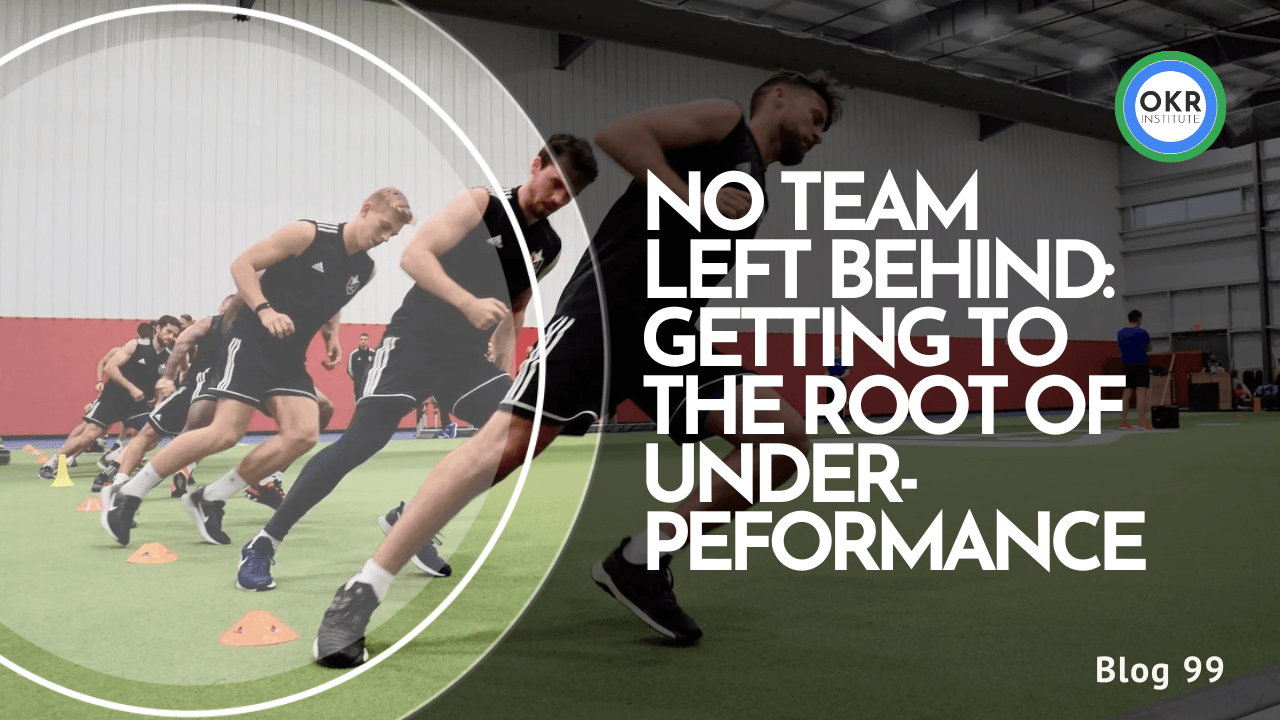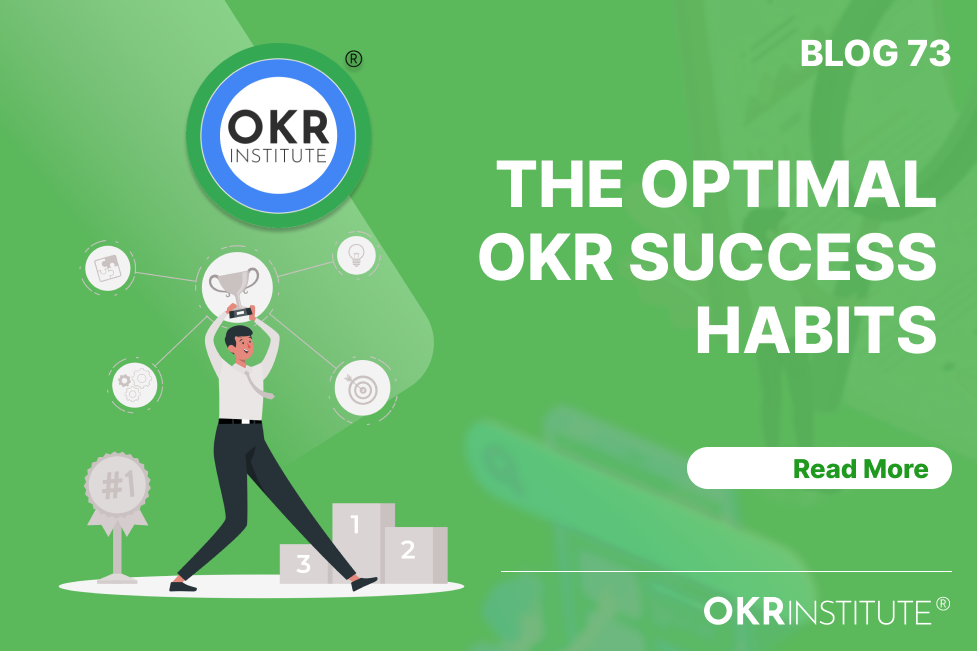No Team Left Behind: Getting to the Root of Underperformance

What is Underperformance?
Underperformance refers to a situation where an individual, team, or organization fails to meet the expected standards or goals set for their work. It is a relative concept, as performance is measured against predetermined objectives, targets, or industry benchmarks. Underperformance can manifest in various forms, such as missed deadlines, low productivity, poor quality output, or failure to achieve desired results.
Examples of underperformance include:
- A sales team consistently missing their quarterly revenue targets
- A software development team delivering projects with numerous bugs and defects
- An employee consistently arriving late or missing work without valid reasons
- A manufacturing plant operating below its production capacity and efficiency standards
Underperformance is not an absolute state but rather a deviation from what is considered acceptable or desired performance. It is essential to recognize that expectations can vary across different contexts, industries, and organizations, making underperformance a relative concept that must be evaluated within the specific context in which it occurs.
Costs of Underperformance
Underperformance can have severe consequences for an organization, both financially and culturally. The financial costs of underperformance can be substantial, including lost productivity, wasted resources, and missed opportunities. When employees fail to meet expectations, their output is diminished, leading to reduced revenue and profitability. Additionally, underperformance can necessitate the allocation of resources towards remedial training, coaching, or even the hiring of replacement personnel, further increasing costs.
Beyond the direct financial impact, underperformance can also lead to significant productivity losses. Underperforming team members can create bottlenecks, slowing down the overall workflow and hindering the progress of the entire team. This ripple effect can result in missed deadlines, delayed projects, and a general lack of efficiency, ultimately undermining the organization’s ability to achieve its goals.
Moreover, underperformance can have a detrimental impact on team morale and organizational culture. High-performing employees may become frustrated and demotivated when they perceive that underperformance is tolerated or not addressed effectively. This can lead to increased absenteeism, higher turnover rates, and a general erosion of employee engagement and commitment to the organization’s mission.
In the long term, persistent underperformance can damage an organization’s reputation and competitiveness. Clients or customers may become dissatisfied with the quality of products or services, leading to a loss of business and market share. Additionally, potential top talent may be deterred from joining an organization perceived as underperforming or lacking in accountability, making it challenging to attract and retain the best employees.
Addressing underperformance promptly and effectively is crucial to mitigate these costs and maintain a high-performing, motivated, and cohesive workforce. By recognizing the significant financial, productivity, and cultural implications of underperformance, organizations can prioritize proactive measures to identify and address issues before they escalate.
Identifying Underperformance Early
Recognizing underperformance promptly is crucial for addressing issues before they escalate. Several warning signs and measurable metrics can indicate a team or individual is underperforming:
Warning Signs
- Missed deadlines or milestones
- Decreased productivity or output quality
- Increased errors, rework, or customer complaints
- Disengagement or low morale among team members
- Interpersonal conflicts or communication breakdowns
Measurable Metrics
- Key Performance Indicators (KPIs) falling below targets
- Declining sales, revenue, or profitability figures
- Increased costs or inefficient resource utilization
- High absenteeism, turnover, or attrition rates
- Negative feedback from customers, stakeholders, or peers
Feedback Processes
Implementing structured feedback mechanisms is essential for identifying underperformance early. This can include:
- Regular performance reviews and check-ins
- 360-degree feedback from peers, subordinates, and managers
- Customer satisfaction surveys and feedback channels
- Project retrospectives and lessons learned sessions
Self-Assessment
Encouraging self-awareness and self-assessment among team members can also aid in early identification. Techniques like:
- Personal goal-setting and progress tracking
- Reflective journaling or blogging
- Seeking feedback from trusted colleagues
- Participating in professional development activities
By proactively monitoring these warning signs, metrics, and feedback channels, organizations can detect underperformance before it becomes entrenched, enabling timely interventions and support.
Root Causes – Individual Factors
Individual factors can play a significant role in team underperformance. One common issue is a skills gap, where team members lack the necessary knowledge, abilities, or expertise to perform their roles effectively. This can stem from inadequate training, rapidly evolving job requirements, or a mismatch between an individual’s skills and the demands of their position.
Motivation is another crucial factor. Low motivation can lead to disengagement, lack of effort, and poor performance. This can be caused by various factors, such as lack of recognition, limited growth opportunities, or dissatisfaction with the work environment or organizational culture.
Burnout is a state of physical, emotional, and mental exhaustion resulting from prolonged stress and excessive workload. When team members experience burnout, their productivity, decision-making abilities, and overall performance can suffer significantly.
Personal issues, such as health problems, family crises, or financial difficulties, can also impact an individual’s ability to perform at their best. These external factors can be challenging to manage and may require empathy and support from managers and colleagues.
Finally, job fit is essential for optimal performance. If an individual’s skills, interests, and personality do not align with the requirements of their role, it can lead to frustration, disengagement, and underperformance. Ensuring proper job fit during the hiring process and providing opportunities for internal mobility can help mitigate this issue.
By understanding and addressing these individual factors, organizations can take proactive steps to support their team members and create an environment conducive to high performance.
Root Causes – Managerial Factors
Underperformance in teams can often be traced back to managerial factors. Poor leadership, unclear expectations, inadequate training and coaching, and a lack of resources can all contribute to a team’s inability to meet performance standards.
Poor Leadership: Ineffective leadership is a significant contributor to team underperformance. Leaders who lack vision, fail to set clear goals, or fail to provide direction and support can leave team members feeling rudderless and unmotivated. Poor communication, micromanagement, or a lack of trust and empowerment can also undermine team performance.
Unclear Expectations: When team members are unsure of what is expected of them, it becomes challenging to meet performance targets. Unclear or constantly shifting goals, poorly defined roles and responsibilities, and a lack of performance metrics can lead to confusion, misalignment, and underperformance.
Inadequate Training and Coaching: Teams require ongoing training and coaching to develop the necessary skills and knowledge to perform effectively. Managers who fail to provide adequate training opportunities, constructive feedback, or coaching can hinder team members’ professional growth and ability to perform at their best.
Lack of Resources: Teams need access to the right tools, equipment, and resources to perform their tasks effectively. Managers who fail to provide the necessary resources, whether due to budgetary constraints or poor planning, can significantly impede team performance. This can include inadequate staffing levels, outdated technology, or insufficient materials and supplies.
By addressing these managerial factors, organizations can create an environment that supports and enables team success. Effective leadership, clear expectations, ongoing training and coaching, and access to the necessary resources are essential for teams to perform at their best.
Root Causes – Organizational Factors
Organizational factors can significantly contribute to team underperformance. A dysfunctional or toxic culture can breed negativity, mistrust, and disengagement, hindering collaboration and motivation. Unclear roles, responsibilities, and reporting structures can lead to confusion, duplication of efforts, and a lack of accountability.
Structural issues, such as siloed departments, bureaucratic processes, or inefficient resource allocation, can create bottlenecks and hinder productivity. Constant change, uncertainty, or lack of clear direction from leadership can also disrupt focus and commitment, leading to underperformance.
Inflexible or outdated policies and procedures can stifle innovation, creativity, and adaptability, making it difficult for teams to respond to changing market conditions or customer needs. Inadequate training, development opportunities, or resources can leave employees ill-equipped to perform at their best.
Addressing these organizational factors is crucial. It may involve cultural transformation initiatives, restructuring efforts, streamlining processes, updating policies, providing clarity and direction, and investing in employee development and support systems.
Addressing Underperformance – Data Analysis
Objectively measuring performance is crucial when addressing underperformance. By collecting and analyzing relevant data, you can identify patterns, trends, and areas of concern without relying solely on subjective impressions. This data-driven approach helps remove biases and provides a solid foundation for making informed decisions.
Start by defining clear and measurable performance metrics aligned with your organization’s goals and objectives. These metrics should be specific, quantifiable, and relevant to the roles and responsibilities of the team or individuals being evaluated. Regularly track and monitor these metrics, ensuring that data collection is consistent and accurate.
Once you have sufficient data, analyze it to identify high and low performers. Look for deviations from expected performance levels, as well as any notable trends or patterns over time. Pay attention to factors such as productivity, quality of work, adherence to deadlines, and customer satisfaction, among others.
Visualize the data using charts, graphs, or other visual representations to make patterns and trends more easily identifiable. This can help you quickly spot outliers, areas of concern, or potential areas for improvement.
Additionally, consider segmenting the data based on various factors, such as job roles, departments, or team structures. This can reveal insights into whether underperformance is concentrated in specific areas or roles, which can inform targeted interventions.
Remember, data analysis should not be a one-time exercise but an ongoing process. Regularly review and update your data to monitor progress and adjust your approach as needed. By combining objective data analysis with other intervention strategies, you can effectively address underperformance and foster a culture of continuous improvement within your organization.
Addressing Underperformance – Open Communication
Open and honest communication is vital when addressing underperformance within a team. Managers should initiate candid conversations with underperformers, creating a safe environment for them to share their perspectives without fear of retribution. These conversations should aim to understand the root causes of underperformance from the employee’s point of view, as well as gather their input on potential solutions.
Active listening is crucial during these dialogues. Managers should avoid making assumptions or judgments, and instead, seek to truly comprehend the challenges or barriers that the underperformer is facing. This may involve exploring personal factors, such as skill gaps or motivation issues, as well as organizational or managerial factors that could be contributing to the underperformance.
By fostering an open and collaborative dialogue, managers can gain valuable insights into the underlying reasons for underperformance, which may not be immediately apparent. This information can then inform the development of targeted improvement plans that address the specific needs and challenges of the underperformer.
Moreover, involving underperformers in the problem-solving process can increase their buy-in and commitment to the improvement plan. When individuals feel heard and their perspectives are valued, they are more likely to embrace the necessary changes and take ownership of their professional development.
Improvement Plan Development
Developing an effective improvement plan is crucial for addressing underperformance within teams. This plan should outline specific, measurable goals tailored to the identified areas of concern. Clear targets and timelines should be established, allowing for progress monitoring and accountability.
The improvement plan should detail the resources required, such as additional training, coaching, or tools necessary for success. Allocating appropriate resources demonstrates the organization’s commitment to supporting the team’s growth and development.
Roles and responsibilities should be clearly defined within the plan. This includes identifying the individuals responsible for implementing various aspects of the plan, as well as the team members accountable for achieving specific goals. Establishing clear ownership and accountability ensures that everyone understands their part in the improvement process.
Additionally, the improvement plan should outline a timeline for regular check-ins and progress reviews. These check-ins provide opportunities to assess the effectiveness of the interventions, make necessary adjustments, and celebrate milestones achieved. Consistent monitoring and feedback are essential for maintaining momentum and ensuring the plan remains on track.
By developing a comprehensive improvement plan that addresses specific goals, resources, timelines, and roles and responsibilities, organizations can effectively support underperforming teams and foster an environment conducive to growth and success.
Coaching and Training Support
Providing coaching and targeted training opportunities is a crucial step in addressing underperformance within teams. By identifying the specific skill gaps or knowledge deficiencies contributing to subpar performance, organizations can develop tailored development plans to bridge these gaps.
Coaching involves pairing underperforming team members with experienced mentors or subject matter experts. These mentors can provide personalized guidance, feedback, and support to help individuals overcome their challenges and improve their skills. Regular one-on-one coaching sessions allow for open discussions, goal setting, and tracking progress over time.
In addition to coaching, targeted training programs can be designed to address the identified areas of underperformance. These programs may include classroom-style training sessions, online courses, workshops, or on-the-job training opportunities. The key is to provide practical, hands-on learning experiences that directly relate to the skills or knowledge needed for improved performance.
Establishing regular feedback loops is also essential in the coaching and training process. Frequent check-ins and performance evaluations allow managers and mentors to assess progress, adjust strategies as needed, and provide ongoing encouragement and constructive feedback. This continuous feedback cycle helps reinforce positive behaviors and address any lingering issues or areas of concern.
By investing in coaching and training support, organizations can demonstrate their commitment to employee development and create a culture of continuous learning and improvement. This proactive approach not only addresses underperformance but also helps to build a more skilled and capable workforce, ultimately contributing to the overall success and competitiveness of the organization.
Addressing Systemic Contributors
Underperformance often has roots that extend beyond individual team members or managers. Organizations must critically examine their systems, policies, processes, leadership, and culture to identify and resolve systemic contributors to underperformance.
Improve Policies and Processes
Outdated, inefficient, or overly complex policies and processes can hamper performance. Regularly review and streamline procedures to remove bottlenecks, reduce administrative burdens, and empower teams to work more effectively. Involve team members in this process to gain valuable insights and promote buy-in.
Enhance Leadership
Strong, supportive leadership is crucial for fostering high-performing teams. Invest in leadership development programs to equip managers with the skills needed to inspire, motivate, and guide their teams effectively. Encourage leaders to model desired behaviors, provide clear direction, and create an environment that values open communication and continuous improvement.
Reshape Culture and Environment
An organization’s culture and work environment can significantly impact team performance. Cultivate a culture that promotes collaboration, innovation, and accountability. Encourage open communication, knowledge sharing, and a growth mindset. Ensure that the physical work environment is conducive to productivity, with appropriate resources, tools, and supportive infrastructure.
By addressing systemic contributors, organizations can create an ecosystem that empowers teams to thrive and perform at their best. This holistic approach not only resolves underperformance but also fosters a culture of excellence and continuous improvement.
When to Terminate Underperformers
While termination should be the last resort, there may be situations where an underperforming employee fails to improve despite all efforts. In such cases, it’s crucial to follow proper legal and compliance procedures to avoid potential liabilities.
Before considering termination, ensure that you have documented all performance issues, provided ample coaching and training opportunities, and followed your organization’s progressive disciplinary policies. Consult with legal counsel or human resources professionals to ensure compliance with relevant employment laws and regulations.
If termination becomes necessary, handle the process with professionalism, respect, and empathy. Provide clear and objective reasons for the termination, and offer any applicable severance or outplacement services. Ensure a smooth offboarding process, including the retrieval of company assets, the transfer of knowledge, and the appropriate communication to relevant stakeholders.
Remember, termination should never be used as a punitive measure or a knee-jerk reaction. It should be a well-considered decision based on a comprehensive evaluation of the employee’s performance, the efforts made to support their improvement, and the potential impact on the organization.
Underperformance Prevention
Preventing underperformance is far more effective than addressing it after the fact. Organizations should prioritize hiring the right talent, setting clear expectations, investing in training and development, and cultivating a strong, positive culture.
During the hiring process, thoroughly assess candidates’ skills, experience, and cultural fit. Ensure they have the necessary qualifications and align with the company’s values and goals. Clearly communicate performance expectations from the outset.
Provide comprehensive onboarding and ongoing training opportunities to equip employees with the knowledge and tools for success. Encourage continuous learning and professional development. Invest in coaching, mentoring, and upskilling programs.
Foster a supportive, collaborative work environment that values open communication, feedback, and growth mindsets. Celebrate achievements, recognize efforts, and promote a sense of purpose and belonging.
Regular check-ins, performance reviews, and constructive feedback loops can identify potential issues early and course-correct before they escalate. Empower managers with the training and resources to effectively lead and develop their teams.
By prioritizing prevention through strategic hiring, clear expectations, robust training, and a positive culture, organizations can minimize underperformance and cultivate a highly engaged, productive workforce.
CEO of the OKR Institute
Related Courses
Recent Posts
Tags
#OKR
#OKR Implementation
#underperforming







